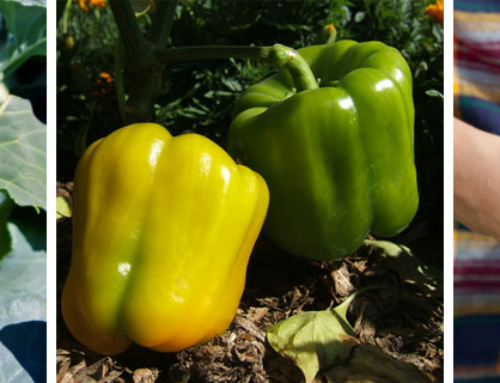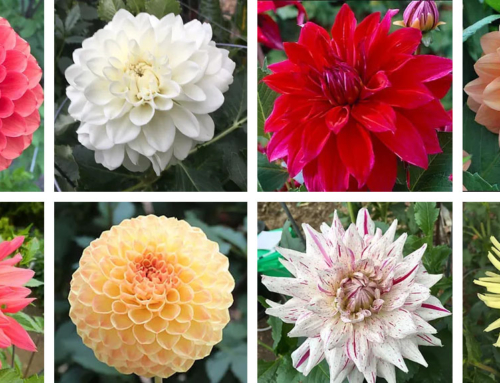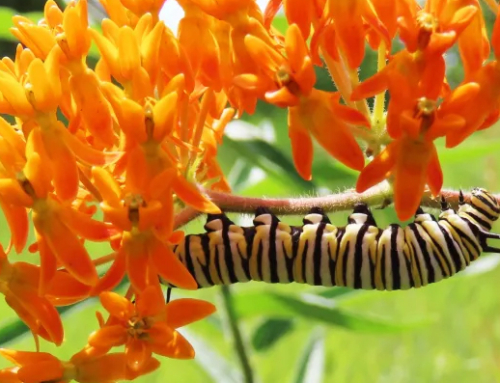The first thing to remember about gardening is that there really aren’t any rules when it comes to your own garden. Do you want a formal garden where everything is in its place or do you want an unrestrained, ever-changing scape? And no one said it had to be in the ground.
There are numerous styles of containers you can use: tall ones, short ones, plain or fancy. You can use wood ceramic, pottery or plastic. All you need is a container. Holes are necessary in the bottom to have really good drainage so plant roots won’t drown. Good soil mix is needed because the container can’t tap into an earthworm or humus-rich field to feed them either. You will have to water the container regularly and occasionally fertilize, but the need for weeding will be almost non-existent.
Consider this: containers don’t have to be planted with flowers! Try growing veggies instead or as part of a container design.
We teach the concept of having “A Thriller, a Filler and a Spiller” when teaching container gardening, and this design concept can be applied to vegies as well.
Here are some combinations you might want to try:
|
Thrillers |
Spillers |
Fillers |
| Patio tomatoes – determinate varieties | Cucumbers | Creeping Thyme |
| Brussels Sprouts | Nasturtium | Rainbow Chard |
| Jalapenos | Summer Squash | Basil |
The following is a list of the most successful container vegetables as taught in our “Vegetables One By One” – yes, we do include some root vegetables in the list. There are types available that are not intended to grow deeply. Look for short varieties of root vegetables.
- Leaf lettuce or head lettuce
- Kale
- Radishes
- Tomatoes
- Summer Squash
- Collards
- Carrots
- Peppers
- Cucumbers
- Spinach
- Cabbage
- Beets
- Bush Beans
- Swiss Chard
Don’t forget the herbs: tarragon, basil, thyme, parsley, sage, rosemary and even stevia – the list goes on and on.
The bottom line is that you can grow vegetables in containers quite successfully. All you have to do is try.
By Kathy Frederickson, Hennepin County Master Gardener




